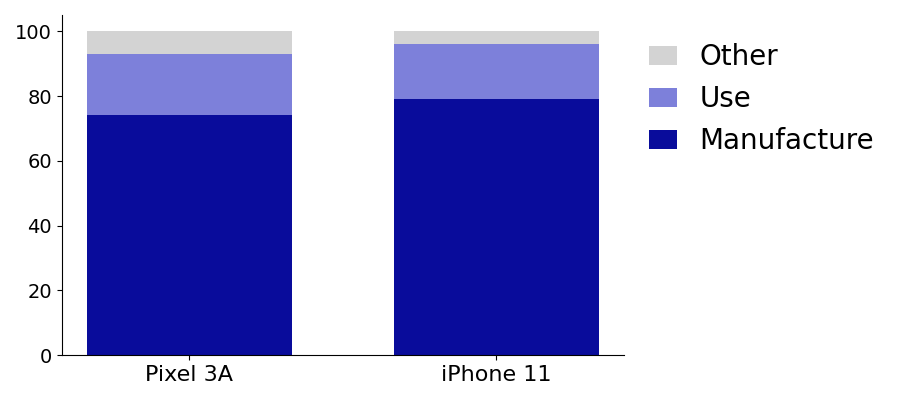With over 1.2 billion smartphones shipped in 2021, it’s clear that they are a ubiquitous part of our lives. Smartphones have a relatively short lifespan; the average upgrade cycle is two years. People replace them for different reasons — they want a better camera, newer software features, the screen becomes too broken to be usable, or the battery life doesn’t retain a charge. However, even if the screen is cracked or the battery life has diminished, the discarded devices can be repurposed to perform valuable computations.

The rapid consumption of smartphones comes with significant environmental costs. Manufacturing smartphone computer chips is incredibly carbon-intensive. This embodied carbon outweighs the carbon costs of powering the smartphone over its entire lifetime. Repurposing smartphones to extend their life is critical to reducing their carbon footprint.
The Junkyard Computing Project aims to repurpose these unwanted smartphones for useful computation. This computational stockpile represents a huge wasted potential; these smartphones have a high-performance and energy-efficient processor, extensive networking capabilities, and a reliable built-in power supply. This project gives a second life to older, discarded, idle smartphones. The project’s research addresses critical technical questions of transforming a user-optimized, interactive device into a robust, reliable device capable of long-term, unattended operation. It develops new metrics to capture manufacturing and operational carbon costs, couples these with economic models, and establishes a roadmap for the best opportunities for old electronic devices. Finally, the project tests these ideas at scale to empirically establish how to use phones-as-compute and phones-as-sensors. We have shown how to repurpose smartphones as a web server for the project, as cloudlets for microservices for social media websites, and as wildlife monitoring sensors.
The project has gained a lot of attention. In the popular press, it had articles on Hacker News and Hackaday. Our ASPLOS paper has over 50,000 downloads making it the most downloaded paper in ASPLOS history (28 years). It was given a Distinguished Paper Award at ASPLOS. We were awarded a National Science Foundation grant as part of the Design for Environmental Sustainability in Computing program. A Google gift allows us to work closely with Dave Patterson, Herman Schmit, and other Googlers to develop racks of repurposed smartphones.
Finally, it should be noted that “Junkyard Computing” is the unofficial project name. The National Science Foundation politely asked us to remove “Junkyard Computing” from the title of that grant. Of course, we obliged. We wouldn’t want an overzealous senator to wrongly accuse us of wasting taxpayer money! We promise that we are spending US taxpayer dollars responsibly. Dave Patterson coined the name “Redundant Array of Inexpensive Smartphones (RAIS)” for cloud repurposing efforts. He didn’t think that “junkyard” was a good way to sell the project to Google’s upper management. Who are we to argue with a Turing Award winner and legendary acronym maker? Regardless of the name, our research will find new homes for powerful but unwanted smartphones and lead to a more holistic, carbon-centric view of computation